Die
Carl Zeiss Spektive Victory DiaScope 65T* FL und 85T* FL
- Vergleichender
Testbericht über das Baader Hyperion ClickStop Zoom
Okular an verschiedenen Spektiven
- Baader
Zubehör zu den Zeiss Victory DiaScope Spektiven, Baader Hyperion ClickStop Zoom- und Symmetric Okulare
- Auch lieferbar: ein Okularadapter von Carl Zeiss
für alle handelsüblichen 1¼ Okulare, ein fotografischer
Adapter zum Anschluss von Kleinbildkameras an die Zeiss Spektive und weiteres
Zubehör
- Einen kompetenten
und aktuellen Test- und Erfahrungsbericht zum Diascope 85T* im download als
pdf-file finden Sie hier
 Preisliste - in Überarbeitung Preisliste - in Überarbeitung |
 |
| |
|
 |
 pdf-file:
Baader Hyperion Clickstop Zoom-Okular 8-24mm –
Sonderausführung zum Anschluss an alle Carl Zeiss Diascope-und Victory
DiaScope Spektive pdf-file:
Baader Hyperion Clickstop Zoom-Okular 8-24mm –
Sonderausführung zum Anschluss an alle Carl Zeiss Diascope-und Victory
DiaScope Spektive |
|
|
|
Allgemeine Beschreibung der Carl Zeiss Spektive
Victory 65T* FL und 85T* FL
Seit
über 100 Jahren baut Carl Zeiss Ferngläser und monokulare Fernrohre,
die durch ihre Qualität weltberühmt wurden. Mit zahlreichen
Pionierleistungen hat Carl Zeiss maßgeblich zum Fortschritt auf dem
gesamten Gebiet der Optik beigetragen. So repräsentieren denn auch die
vier neuen Spektive durch das Advanced Optics System (AOS) von Carl Zeiss
modernste optische Technologie und ein Höchstmaß an Präzision.
Die Zeiss Diascope Modelle bieten dem Beobachter über große
Distanzen eine überragende Erkennbarkeit feinster Einzelheiten. Das ist
die wohl wichtigste Eigenschaft eines Spektives. Da sie auch im Nahbereich,
d.h. ab vier bzw. fünf Metern, einsetzbar sind, erschließen sie dem
Naturfreund ganz neue Dimensionen der Beobachtung. Weitere Vorteile sind die
praxisgerechte Baulänge, das günstige Leistungsgewicht und die
einfache, schnelle Handhabung. Das ansprechende Äußere zeugt von
einer gelungenen Synthese aus Form und Funktion.
|
|
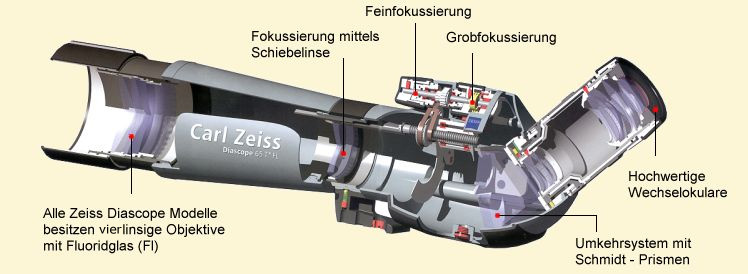
|
Die bestechende Bildqualität der neuen Zeiss Victory Diascope
Spektive wird durch die Kombination von T*Mehrschichtvergütung und Fluoridgläsern
erreicht, welche den Objektiven superachromatische Eigenschaften verleihen. In
der Praxis bedeutet das: ein sehr helles Bild aufgrund hoher
Lichtdurchlässigkeit des optischen Systems, hervorragende Bildbrillanz
durch hohen Kontrast, naturgetreue Farbwiedergabe bis in feinste Nuancen und
Vermeidung von Farbsäumen.
Die gestochene Bildschärfe
über das gesamte Sehfeld gewährleistet eine ausgezeichnete
Detailerkennbarkeit. Das sind Qualitäten, die Amateurastronomen,
Ornithologen, Jäger und engagierte Naturbeobachter von einem Zeiss Spektiv
erwarten - und genau das bieten ihnen die Diascope Modelle. Die
zuverlässige Abdichtung gegen Staub und Wasser, eine Füllung mit
Stickstoff gegen das Beschlagen im Innern und eine robuste Mechanik sorgen
dafür, dass diese Eigenschaften auf Dauer erhalten bleiben.
|
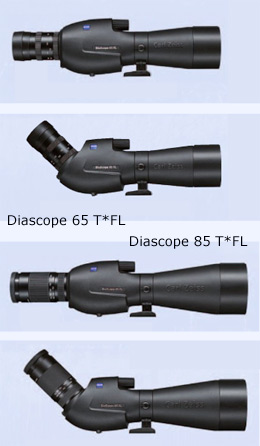 |
- Dual-Fokussierung
mit griffigem Grob- und Feintrieb:
- Grobtrieb für
schnelles Einstellen der Schärfe,
- Feintrieb für
gefühlvolles fokussieren ohne Griffwechsel.
- Kürzester
Nahbeobachtungsabstand: bei Diascope 65 T* FL = 4m,
- bei Diascope 85 T*
FL = 5m.
- Wasserdicht -
Dichtheitsprüfung nach ISO 9022-8. Mit Stickstoff gefüllt - keine
eingebaute Feuchtigkeit. Gehäuseabschluss okularseitig mit Planplatte.
- Objektivtyp:
Superachromat, bei Diascope 65 T* FL Brennweite f = 384 mm,
- bei Diascope 85 T*
FL Brennweite f = 502 mm.
- Filtergewinde im
Objektiv: bei Diascope 65 T* FL = M 67x0,75 und bei Diascope 85 T* FL = M 86x1.
- Alle Glas/Luft
Flächen mit Carl Zeiss T* Mehrschichtvergütung.
- Umkehrsystem: Pechan
Prisma bei Geradeeinblick, modifiziertes Pechan Prisma bei
Schrägeinblick.
- Natürlich mit
Carl Zeiss P-Coating für optimale Auflösung.
- Drehbare, breite
Stativaufnahme mit 1/4 und 3/8 Zoll Gewinde.
- Ausziehbare
Sonnenblende mit Peilhilfe.
- Fernrohrkörper
um die Längsachse mit Rast bei 45° und 90° schwenkbar.
- Schutzkappen
für Objektiv und Okularanschluss im Lieferumfang.
- Echte
Leichtgewichte: Diascope 65 T* FL = 1,1 kg leicht (ohne Okular)
- Diascope 85 T* FL =
1,45 kg leicht (ohne Okular) - das Leichteste seiner Klasse!
- Drei Okulare stehen
zur Auswahl: bei Diascope 65 T* FL für Vergrößerungen von 15x
bis 56x,
- bei Diascope 85 T*
FL für Vergrößerungen von 20x bis 75x. Zubehör
Umfangreiches Zubehör: Bereitschafts- und Tragetasche, Foto-Adapter
- 10 Jahre Garantie
und weltweiter Service.
|
|
|
|
|
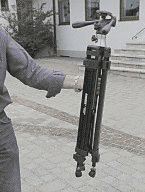 |
Als preiswertere Lösung zur Montage des Zeis Spektives für
Natur- und Himmelsbeobachtungen empfehlen wir Ihnen unser umkonstruiertes, sehr
steifes Photostativ mit 35cm ausziehbarer Mittelsäule "ASTRO &
NATURE".
Ideal geeignet für stehende Beobachtung mit Feldstechern
und Spektiven, maximale Auszugshöhe 189cm, Fluid-Neigekopf mit Griffen
für beidhändige Positionierung eines Feldstechers, zwei Auszugsstufen
für die Stativbeine, doppelzügige Stativbeine in der oberen
Auszugsstufe; Neigekopf abschraubbar und einzeln verwendbar als massiver
Tangentialaufsatz mit 1/4" Photogewindeanschluss.
Alles weitere finden Sie hier
beschrieben.. |
|
| |
Baader Zubehör zu den Zeiss Diascope
Spektiven
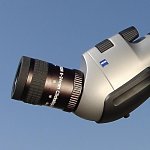
 pdf-file Preisliste
Zeiss pdf-file Preisliste
Zeiss
Diascope,
Feldstecher
und Zubehör - z.Z.
nicht verfügbar |
1¼" BAADER Hyperion 8-24 mm ClickStop
Weitwinkel Zoom-Okular
- Eigengesichtsfeld
50- bis 68 Grad,
- (mit Rastfunktion
für die Brennweiten 8/12/16/20/24 mm),
- inkl. 1¼"
verchromter Steckhülse mit Sicherungsnut (abnehmbar)
- inkl.
Adaptionsgewinde an (fast) alle Celestron Ultima Spektive
- inkl. Adaptionsgewinde M45 für alle Carl Zeiss
Diascope-Spektive !
- inkl augenseitiger
Seitenlichtblende mit Helicoil-Gewinde
- inkl. SP54*
Hyperion-Systemgewinde zum afokalen oder projektiven Anschluss (fast) aller
DSLR-Kameras !
Preise und alle
weiteren Informationen finden Sie in
der Sektion 26
*Optional lieferbar:
Adapter SP54/T-2 (Best Nr. 295 8085) zur Adaption von Kameras am
SP54-Systemgewinde des Clickstop-Zoom-Okulars - siehe auch die Beispielbilder
unten.
 pdf-file
(600Kb) mit einer allgemeinen Bedienungsanleitung und Einatzmöglichkeiten
der Hyperion Okulare pdf-file
(600Kb) mit einer allgemeinen Bedienungsanleitung und Einatzmöglichkeiten
der Hyperion Okulare
 pdf-file mit
einer Beschreibung der Einsatzmöglichkeiten des Baader Hyperion ClickStop
Zoom-Okulars pdf-file mit
einer Beschreibung der Einsatzmöglichkeiten des Baader Hyperion ClickStop
Zoom-Okulars |
Klicken Sie zum Laden von größeren
Bildansichten auf die kleinen Vorschaubilder oben und
rechts.
Hinweis: Zum Einsatz des Hyperion Zoom Okulars an
den Zeiss Spektiven müssen sowohl die verchromte Steckhülse als auch
der Übergangsring von M45 auf M35 entfernt werden. Erst wenn beide Ringe
entfernt sind wird das M45 Gewinde freigegeben, mit dem das Okular am Zeiss
Diascope angeschraubt werden kann (siehe rote Markierung
im Bild rechts). |
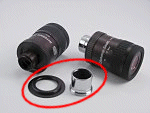
Lieferumfang: 8-24 mm Clickstop-Zoom, mit verchromter 1
1/4"
Okularsteckhülse und Übergangsring von M45(Zeiss)- auf M35
(Synta)-Gewinde |
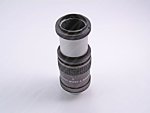
Beispiel für optionale Kameraadaption, mit Adapter
SP54/T-2(#2958085), Distanzhülse #25B und handelsüblichem
SLR-T-Ring |
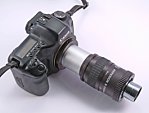
Beispiel: Teilekombination aus Bild Nr.2, angeschlossen an eine
DSLR-Kamera
|
SONDEREDITION Baader "Symmetric
Diascope-Okulare" - Höchste Vergrößerung für alle
ZEISS Diascope Fluorit Spektive. Mit Gummi-Augenmuschel und ZEISS Bajonett zum
direkten Anschluss an das Zeiss-Spektiv
|
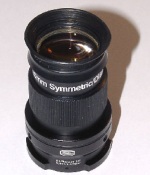 |
Symmetric Weitwinkel-Diascope-Okular
f=25mm
Erstaunliche Leistung und Feldgröße, sehr hohe
Randschärfe und wunderbares Einblickverhalten, klappbare
Gummi-Augenmuschel, komplett mit Schnellwechsel-Okularbajonett für alle
Zeiss Diascope FL Spektive (20-fache Vergrößerung und 45 Meter
Sehfeld auf 1000M - beim FL 85T)
Inklusive Bajonett-Adapter 245
4500
BNr. 245 4505 -
Preis siehe Sektion
25
 pdf-file (100Kb) zu Baader Diascope Okulare pdf-file (100Kb) zu Baader Diascope Okulare
 pdf-file (100Kb) with information about Baader Diascope
eyepieces pdf-file (100Kb) with information about Baader Diascope
eyepieces |
|
|
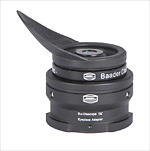
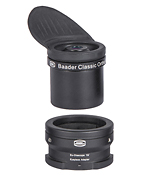
|
Classic ortho 6mm Okular inklusive Bajonett für Zeiss Diascope Spotting
Scopes
Ein absolut erstaunliches
Okular, vollkommen farbfehlerfrei, scharf bis zum Gesichtsfeldrand und mit
durchaus gutem (gutmütigem) Einblickverhalten, inkl. Gummiaugenmuschel.
Komplett mit Schnellwechsel-Okularbajonett für alle Zeiss FL
Diascope-Spective. (64-fache Vergrößerung mit FL 65T-, bzw. 85-fache
Vergrößerung mit FL 85T Spektiv !
 pdf-file (100Kb) zu Baader Diascope Okulare pdf-file (100Kb) zu Baader Diascope Okulare
 pdf-file (100Kb) with information about Baader Diascope
eyepieces pdf-file (100Kb) with information about Baader Diascope
eyepieces |
|
|
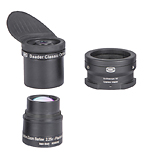

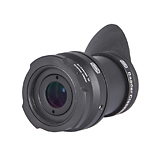
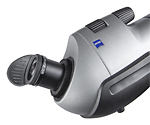 |
 3 mm
(optional 6 mm) Spektiv-Okular (6mm Classic-Ortho mit
Hyperion-Barlow-Linsensatz, inkl. Baader-Bajonettadapter
für Zeiss-Spektive 3 mm
(optional 6 mm) Spektiv-Okular (6mm Classic-Ortho mit
Hyperion-Barlow-Linsensatz, inkl. Baader-Bajonettadapter
für Zeiss-Spektive
 3 mm (optional 6 mm)
Spotting-Scope-Eyepiece (6 mm Classic-Ortho w. Hyperion-Barlow-Lensset,
incl. Baader-bayonet-adapter for
Zeiss-Diascope 3 mm (optional 6 mm)
Spotting-Scope-Eyepiece (6 mm Classic-Ortho w. Hyperion-Barlow-Lensset,
incl. Baader-bayonet-adapter for
Zeiss-Diascope
BNr. 245
4507 Preis
sieheSektion 25
 Hochvergrößerndes Spektiv-Okular 3 mm (bzw. 6mm),
mit Bajonettadapter für Zeiss-Diascope, bestehend aus: 6 mm
Classic-Ortho-Okular, direkt kombiniert mit dem gefassten Linsensatz der
bildfeldebnenden Hyperion-Zoom-Barlowlinse und dem
Baader-Diascope-Bajonettadapter. Die dreilinsige Hyperion-Zoom-Barlow ist
für Verwendung an kurzbrennweitigen Spektiven gerechnet. Sie ebnet die
starke Bildfeldwölbung von Spektiven und bewirkt dadurch hervorragende
Schärfeleistung bis zum Bildfeldrand. Das 6mm Ortho-Okular kann auch ohne
Barlowlinse mit dem Bajonett versehen und an das Spektiv angeschlossen werden. Hochvergrößerndes Spektiv-Okular 3 mm (bzw. 6mm),
mit Bajonettadapter für Zeiss-Diascope, bestehend aus: 6 mm
Classic-Ortho-Okular, direkt kombiniert mit dem gefassten Linsensatz der
bildfeldebnenden Hyperion-Zoom-Barlowlinse und dem
Baader-Diascope-Bajonettadapter. Die dreilinsige Hyperion-Zoom-Barlow ist
für Verwendung an kurzbrennweitigen Spektiven gerechnet. Sie ebnet die
starke Bildfeldwölbung von Spektiven und bewirkt dadurch hervorragende
Schärfeleistung bis zum Bildfeldrand. Das 6mm Ortho-Okular kann auch ohne
Barlowlinse mit dem Bajonett versehen und an das Spektiv angeschlossen werden.
Zwei Vergrößerungen sind bei Verwendung mit einem
Zeiss-Spektiv verfügbar:
Zeiss Diascope 65 T*FL mit 384mm
Brennweite und o.g. Produktzusammenstellung (#2454507): 3 mm (mit montierter
Barlow): 128x / 6 mm (ohne Hyperion-Zoom-Barlow-Linsensatz): 64x
Zeiss
Diascope 85 T*FL mit 502mm Brennweite und o.g. Produktzusammenstellung
(#2454507): 3 mm (mit montierter Barlow): 167x / 6 mm (ohne
Hyperion-Zoom-Barlow-Linsensatz): 84x
 Dedicated high magnification 3 mm
spotting-scope eyepiece (optional 6 mm), incl. bayonet-adapter for
Zeiss-Diascope, consisting of: 6 mm Classic-Ortho-Eyepiece, directly
coupled onto the lens holder of the field flattening Hyperion-Zoom-Barlow,
incl. Baader-Diascope-bayonet-adapter. The triplet-lens Hyperion-Barlow is
designed to compensate for the short focal length of spotting scopes. The lens
set works as field flattener and provides perfect sharpness to the edge of
field. The 6 mm eyepiece can be detached from the barlow lens set and mounted
onto the spotting scope with the supplied Baader-Diascope-Bayonet. Dedicated high magnification 3 mm
spotting-scope eyepiece (optional 6 mm), incl. bayonet-adapter for
Zeiss-Diascope, consisting of: 6 mm Classic-Ortho-Eyepiece, directly
coupled onto the lens holder of the field flattening Hyperion-Zoom-Barlow,
incl. Baader-Diascope-bayonet-adapter. The triplet-lens Hyperion-Barlow is
designed to compensate for the short focal length of spotting scopes. The lens
set works as field flattener and provides perfect sharpness to the edge of
field. The 6 mm eyepiece can be detached from the barlow lens set and mounted
onto the spotting scope with the supplied Baader-Diascope-Bayonet.
Two
magnifications are provided with this product: Zeiss Diascope 65 T*FL w. 384mm
fl and above (#2454507) combo of parts: 3 mm (w. Barlow mounted): 128x / 6 mm
(w/o Hyperion-Zoom-Barlow-lensset): 64x
Zeiss Diascope 85 T*FL w. 502mm
fl and above (#2454507) combo of parts: 3 mm (w. Barlow mounted): 167x / 6 mm
(w/o Hyperion-Zoom-Barlow-lensset): 84x |
|
|
|
|
 pdf-file (100Kb) zu Baader Diascope Okulare pdf-file (100Kb) zu Baader Diascope Okulare
 pdf-file (100Kb) with information about Baader Diascope
eyepieces pdf-file (100Kb) with information about Baader Diascope
eyepieces |
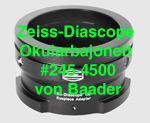
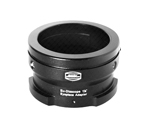 |
Diascope Bajonett 1¼"
Okular-Adapter, um geeignete 1¼" Okulare an Carl Zeiss Diascope-Spektive
anzuschließen
BNr.
245 4500 Preis siehe Sektion
25 |
Dies ist ein Schnellwechsler / Okularhalter mit einer
Bauhöhe von nur 24mm zum Anschluss von 1¼" Astro-Okularen an alle
Zeiss-Diascope Fluorit-Spektive. Für astronomische Anwendung ist ein
schneller Okularwechsel notwendig, ohne die Zielrichtung des Diaskops zu
verstellen. Wir liefern deshalb das Okularbajonett ohne montierten Dichtring,
damit sich die Okulare problemlos wechseln lassen. Im Bajonett ist eine Nut
eingelassen, die zur Aufnahme eines der beiden im Lieferumfang enthaltenen
O-Ringe dient. Wenn Sie die Okularausstattung mit Dichtring bevorzugen, dann
haben Sie durch diese beiden verschiedenen Ringe die Möglichkeit, die
Schwergängigkeit beim Okularwechsel auf streng (großer O-Ring) oder
auf leichtgängig (kleiner O-Ring) einzustellen.
Inklusive O-Ringe (2 Stück) für Baader
Diascope-Okularbajonett # 245 4500.
Für astronomische Anwendung ist ein schneller Okularwechsel
notwendig, ohne die Zielrichtung des Diaskops zu verstellen.
Wir liefern deshalb das Okularbajonett ohne montierten
Dichtring, damit sich die Okulare problemlos wechseln lassen. Im Bajonett ist
eine Nut eingelassen, die zur Aufnahme eines der beiden im Lieferumfang
enthaltenen O-Ringe dient. Wenn Sie die Okularausstattung mit Dichtring
bevorzugen, dann haben Sie durch diese beiden verschiedenen Ringe die
Möglichkeit, die Schwergängigkeit beim Okularwechsel auf streng
(großer O-Ring) oder auf leichtgängig (kleiner O-Ring) einzustellen.
|
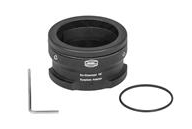 |
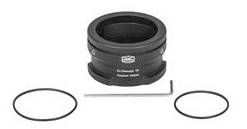 |
  Anleitung
zum Diascope Bajonett-Adapter für Zeiss Spektive Anleitung
zum Diascope Bajonett-Adapter für Zeiss Spektive
  Manual how to use the Baader bajonett
adapter 245 4500 Manual how to use the Baader bajonett
adapter 245 4500 |
Zur
Beachtung: Die Konstruktion des Zeiss Fluorit Diascope Spektiv verlangt,
dass die Feldblende (Eintrittsblende des Okulars) nur bis maximal 24mm
über der letzten Austrittsfläche liegt! Die meisten Astro-Okulare
können diese Bedingung nicht erfüllen und sind daher am Spektiv nicht
verwendbar. |
|
| |
| |
| |
|
|
| |
| |
|
|
Zoom Eyepiece Test:
Baader, Zeiss, Swarovski, Nikon
I recently acquired a new Baader
Hyperion zoom eyepiece (24mm-8mm). This eyepiece comes with a 1.25" barrel and
can also be attached directly to the Zeiss Diascope and Celestron/Synta
spotting scopes. What is most interesting about the Baader is that it has, for
a zoom, an unusually wide field at the low end of its magnification range,
comparable to the Zeiss Diascope zoom. In the US it is available from Alpine
Astronomical at a cost of $189. This is less than half the price of the Zeiss
zoom eyepiece which could make it interesting to those thinking of purchasing a
Diascope. I already own the Zeiss zoom (25.1mm-8.4mm), current Swarovski zoom
(23.1mm-7.7mm) and Nikon 20x-60x MC zoom, NOT the MC II (21mm-7mm). All of
these are adapted for use on astronomical telescopes. I tested all the
eyepieces on an Astro-Physics 92mm f/6.6 APO refractor.
First let me
dispense with the question of sharpness at the center of the field. On my AP
refractor all of the eyepieces here are perfectly sharp in the center
throughout their zoom ranges, just as sharp as fixed magnification eyepieces of
very high quality. The birding scopes these eyepieces are used on will
virtually always be the limiting factor for center sharpness.
There are
performance differences, but they are in the areas of light transmission,
contrast, color accuracy, eye relief, field width and off-axis field curvature,
astigmatism, distortion and lateral color.
I measured the eye relief
and apparent field of each eyepiece at four magnifications on the eyepiece
barrel; 20x, 30x, 40x and 60x. I measured the Baader at 24mm, 8mm and two
settings in between that would correspond to about 30x and 40x if it were
mounted on the Zeiss Diascope. The Baader has “clickstops” which are
supposed to correspond to 20mm, 16mm and 12mm. These are ridiculously
inaccurate. The 20mm setting actually corresponds to about 13mm, the 16mm
corresponds to 10-11mm and the 12mm corresponds to about 9mm. The end stops do
seem to be close to 24mm and 8mm. First the figures for eye relief. These are
measured from the eyecup rim set at its lowest position. Distance to the glass
of the eyelens would be longer by 4-5mm and with most of these eyepieces
(except the Nikon) the eyecups are so wide that the center of a curved eyeglass
lens will probably get closer to the eyelens than the rim of the eyecup, adding
a couple of mm’s to the effective eye relief. These figures may look
short, but I find I can see the entire field at every magnification with all
the eyepieces while wearing reading glasses. Only the Nikon’s eye relief
“feels” a bit short to me without glasses. All of the eyepieces show
the usual dip in the middle of the zoom range.
- Swaro 20x-16mm,
30x-12mm, 40x-10mm, 60x-14mm
- Nikon 20x-12mm,
30x-8mm, 40x-8mm, 60x-12mm
- Zeiss 20x-12mm,
30x-10mm, 40x-8mm, 60x-12mm
- Baader 20x-11mm,
30x-9mm, 40x-9mm, 60x-12mm
Now the
apparent field widths in degrees:
- Swaro 20x-40,
30x-52, 40x-58, 60x-68
- Nikon 20x-40,
30x-45, 40x-52, 60x-59
- Zeiss 20x-50,
30x-57, 40x-62, 60x-71
- Baader 24mm-49,
30x(16.8mm)-56, 40x(12.6mm)-60, 8mm-72
The Baader
does have approximately the same apparent field as the Zeiss over its range.
Both have wider fields than the the Swaro at low magnifications, but the gap
narrows as magnification increases. The Nikon is just not very competitive when
it comes to field width.
The clear loser in this group when it comes to
light transmission, contrast and color accuracy is the Zeiss, which, compared
to the others, is obviously dimmer and lower contrast with a yellow color cast.
The Nikon, Baader and Swaro all have very high light transmission and contrast.
About as good as it gets for complex eyepieces. The Baader is quite
outstanding, possibly the brightest by a hair. It’s easily as bright or
brighter than my Pentax 14mm XW and 13mm Nagler, and it gives up almost nothing
in brightness and contrast compared to my 16mm Zeiss A-16 Ortho. Color
transmission is also very accurate. The Baader and Nikon are nearly
indistinguishable with very slight red casts and the Swaro is a tiny bit
yellow, not blue like many people report for the complete Swaro scope
optics.
There are some interesting differences in off-axis behaviour.
Some of this, like distortion, will be exactly the same in other scopes, but
field curvature and lateral color in other scopes may be different from my
experience.
None of the eyepieces show significant off-axis astigmatism
on the AP scope. Edge softness is almost entirely field curvature. At the
lowest magnification the Baader has slightly less field curvature than the
Zeiss. As magnification is increased field curvature decreases for both until
they are about equal with very little curvature at 40x (12-13mm) and beyond.
For comparison purposes this is an easy thing to measure by focusing an object
at the edge, then moving it to the center and refocus, noting how much the
focuser has to be rotated for different eyepieces. I’ve followed the
recent discussion about how the Zeiss edge performance compares the the Swaro
at low magnification so I also checked the field curvature of the Zeiss and
Baader set at their lowest magnification at about 20 degrees off-axis and
compared that to the Swaro set at 20x. The Swaro has a very flat field with
very little astigmatism or field curvature all the way to the edge of its 40
degree field. Neither the Zeiss nor the Baader is quite as good at the edge of
a 40 degree field circle. Their comparable “sweet spot” is about 30
degrees wide. The Nikon is close to the Swaro at low magnification but with a
little more astigmatism. At short focal lengths the Baader and Swaro become
excellent wide field, long eye relief eyepieces. The Zeiss is nearly as good
except for the lower light transmission and contrast.
Distortion varies.
There is mild barrel distortion at all focal lengths in the Swaro. The Nikon
has very mild pincushion distortion at all focal lengths. There is moderate
pincushion in the wider fields of the Zeiss and Baader which increases with
magnification as the apparent fields get wider.The Baader has a bit more than
the Zeiss, but neither has as much as, for instance, the TeleVue Panoptics at
the same apparent field width.
I didn’t see any significant
differences in lateral color in my telescope. It’s similar in all the
eyepieces at the same distance from the center of the field. There is, of
course, more at the field edges at high magnification as the apparent fields
widen. I didn’t consider it to be a problem, but it could be worse in
faster telescopes.
I haven’t had a chance to try the Baader on the
Diascope yet, but it certainly looks like a real alternative. I prefer it to
the Zeiss on my AP scope. On the Diascope it would produce a little more
magnification than the Zeiss zoom (21x-63x on the 85mm), but would not be
waterproof. Optically, I think the Baader is the best zoom eyepiece I’ve
tried so far. It manages to combine the wide field width of the Zeiss with the
high light transmission, contrast and color accuracy of the Swaro and Nikon,
and at a bargain price. I can’t find much to complain about.
Too
bad there isn't a Nikon adapter. I think the Baader would probably fit and the
Fieldscopes would really benefit from this eyepece.
Henry Link,
erschienen im BirdForum:
www.birdforum.net |
|
|
|
alle Zeiss Ferngläser der Preisliste in einer
graphischen Übersicht (pdf-file)
Preisliste Zeiss Ferngläser und Zuehör
(pdf-file)
|
|
|
|
